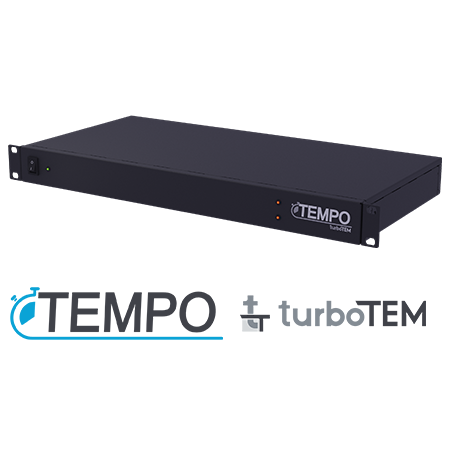ID-04320TEMPO
TEMPO Event-based Modulation System (2ch)
ID-04340TEMPO
TEMPO Event-based Modulation System (4ch)
TEMPO (Trigger-Event Modulated Probability Observation) improves the amount of information obtained for a given electron dose, the information efficiency, of STEM experiments. The concept is simple: There is a large diminishing return on information as more electrons are detected from each point in a STEM scan, so for each dwell period, quickly turn off the electron beam after a given number of electrons are counted (typically 1 ‒ 25) and turn it back on at the start of the next dwell period. In this new imaging paradigm, TEMPO, pixel intensity is defined by the time taken to detect a fixed number of electrons, as opposed to the number of electrons detected in a fixed time. While this distinction may seem small the implications for minimizing specimen damage are substantial. TEMPO is an optional item for either EDM Basic or EDM Synchrony. Please make sure to include either EDM Basic or EDM Synchrony in the configuration. If EDM Basic or EDM Synchrony is already configured in the delivered TEM, only TEMPO can be retrofitted.
Features
Compatible with existing analog STEM detectors and TTL driven beam blankers.
Maximum information efficiency extracted from a minimum delivered electron dose.
Flexibly balance dose or precision across full duty- cycle range via blanking trigger condition.
Specifications
| 2 Channel | 4 Channel | ||
|---|---|---|---|
| Pulse channels | 2 in, 2 out | 4 in, 4 out | |
| Tempo outputs | 2 (from single input) | ||
| Tempo voltage | 3.3 V or 5 V | ||
| Tempo resolution | 8 ns | ||
| Pixel clock input | 3.3V CMOS - 5V TTL compatible | ||
| Blank signal output | 3.3 V CMOS, 5 V TTL | ||
| Connections | BNC | ||
| Signal range | Max. ±10 V | ||
| Signal resolution | 14-bit | ||
| Input impedance | 50 Ω | ||
| Sample rate | 125 Msps (per channel) | ||
| Pulse voltage | 3.3 V CMOS, 5 V TTL | ||
| Pulse frequency | Max. 62.5 MHz | ||
| Power | 100-240V AC | ||
| Control interface | RJ45 ethernet | ||
Gallery
Material application
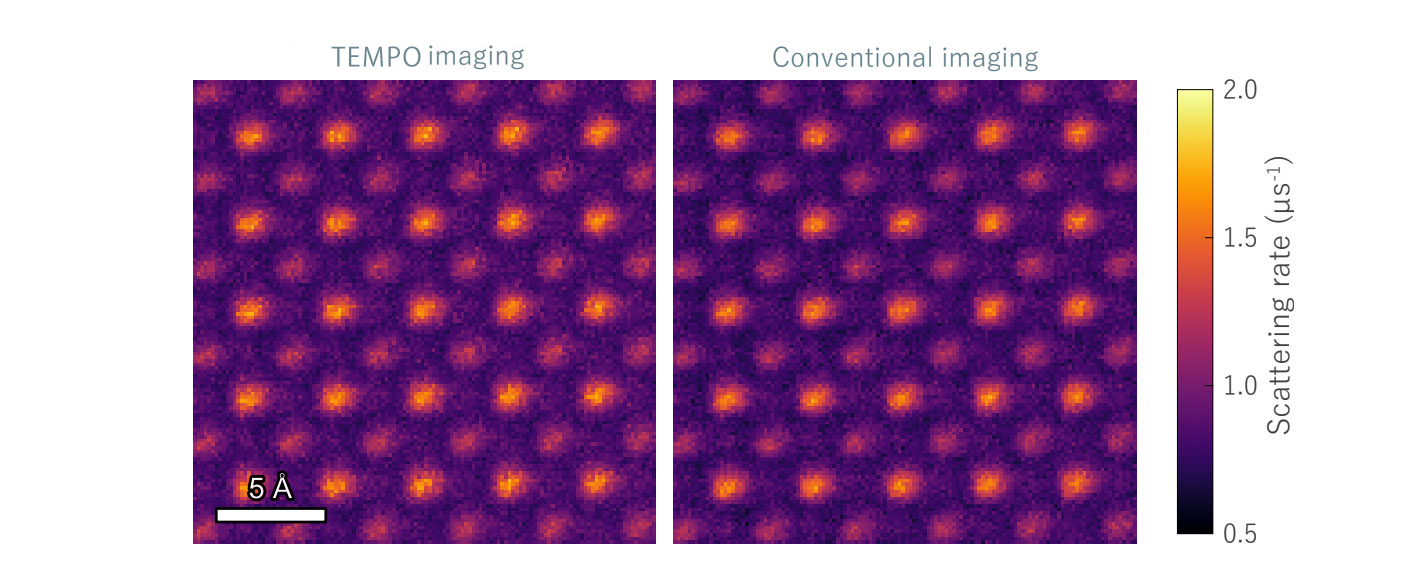
Comparison of the image contrast between TEMPO and conventional STEM imaging of SrTiO3. Both images are shown in units of events per microsecond. The quantitative information offered by TEMPO is identical to conventional approaches. The TEMPO image used a dose of 210 electrons per pixel, while the conventional image used approximately the same total average dose.
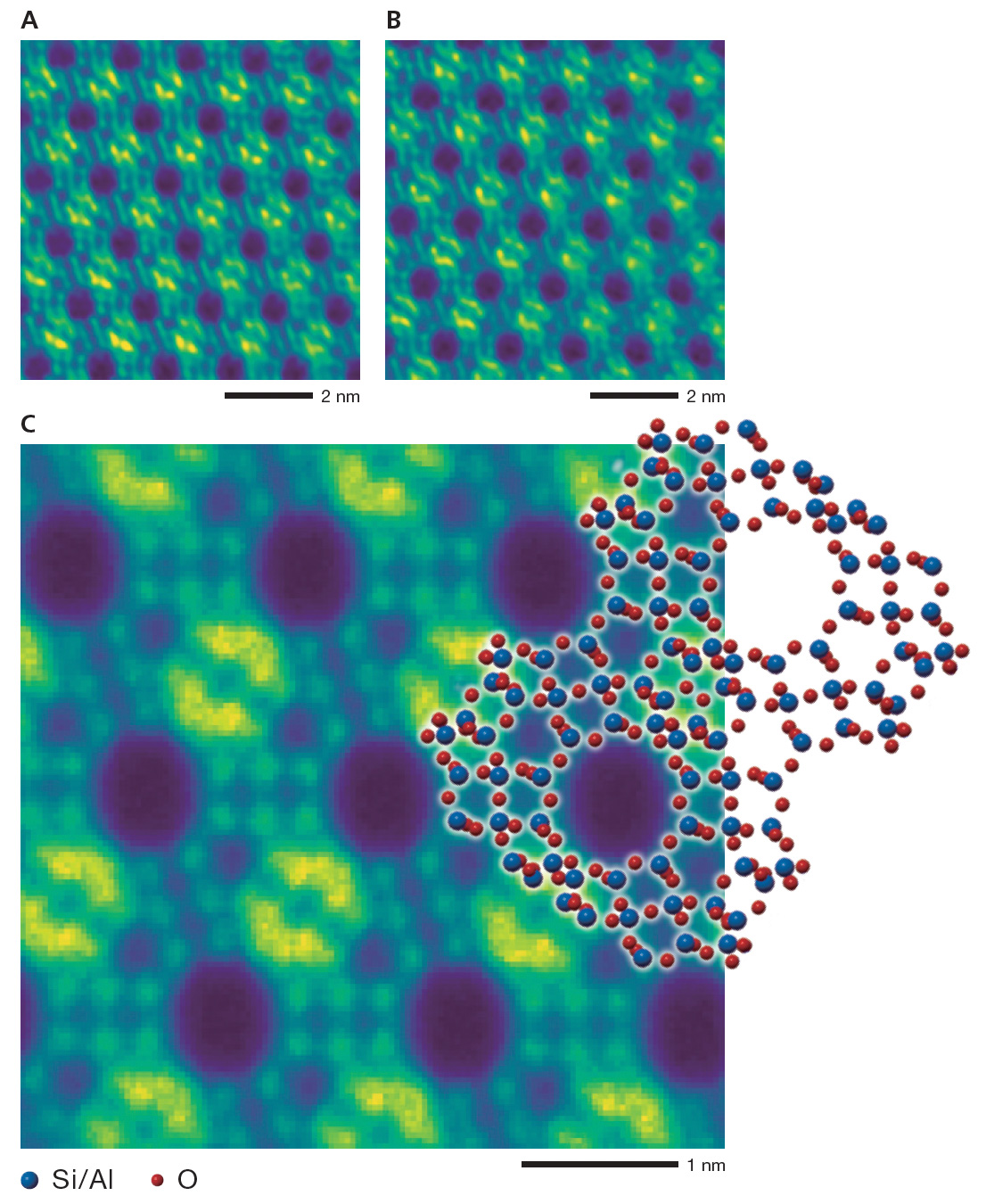
Sample: Zeolite FAU Y-type <110>
Method: ADF STEM
Instrument: JEM-ARM300F2 (wide gap)
Corrector: STEM-ETA corrector (JEOL corrector)
Acceleration voltage: 300
kV
Scan magnification: ×12,000,000
Data acquisition: Superimpose, 20 images
Exposure time: 10 μs/pix
Convergent semi-angle: 8 mrad
Energy spread: 0.37 eV (Reference value)
Probe current: 0.57 pA
Zeolites are sensitive to electron beam irradiation, making them very challenging samples for high-resolution imaging with a transmission electron microscope. The above STEM image of zeolite was obtained by significantly reducing electron beam damage using an Electron Dose Modulator and an Event-based Modulation System (TEMPO) from IDES, Inc and turboTEM. A STEM image was acquired with two detected electrons per pixel, and 20 consecutive STEM images were obtained under the same conditions. Image A on the left shows the first STEM image, while image B on the right shows the 20th STEM image. The 20 STEM images were superimposed through template matching to correct for sample drift, resulting in image C above. The average electron beam dose is 371 e-/Å2.
Biological application
1 event per pixel
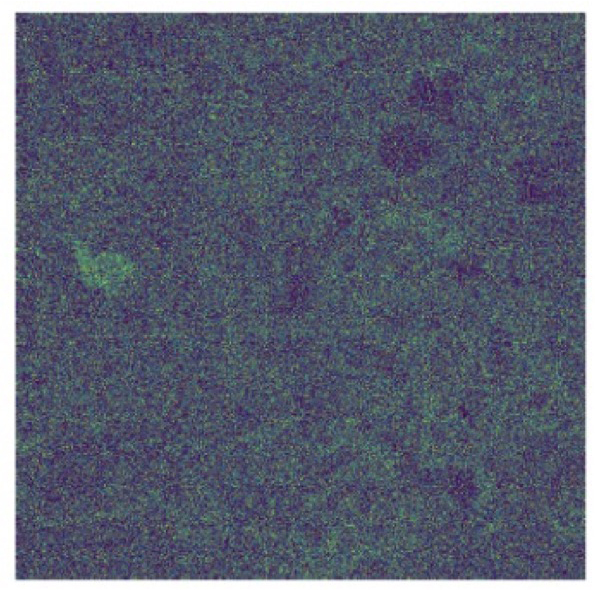
3 events per pixel
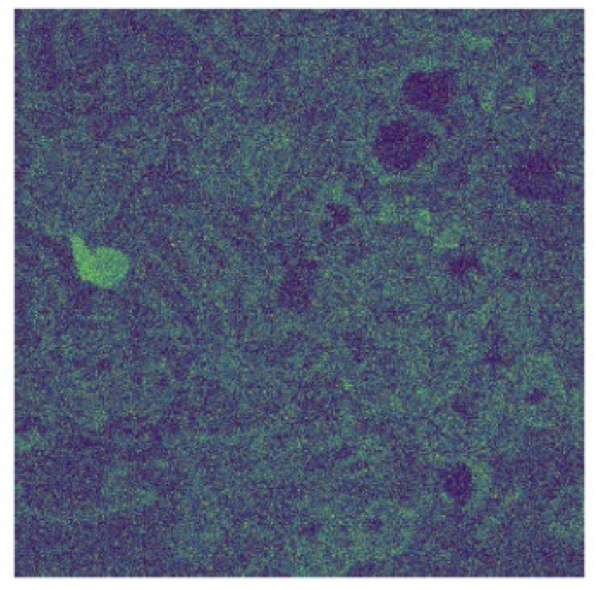
7 events per pixel
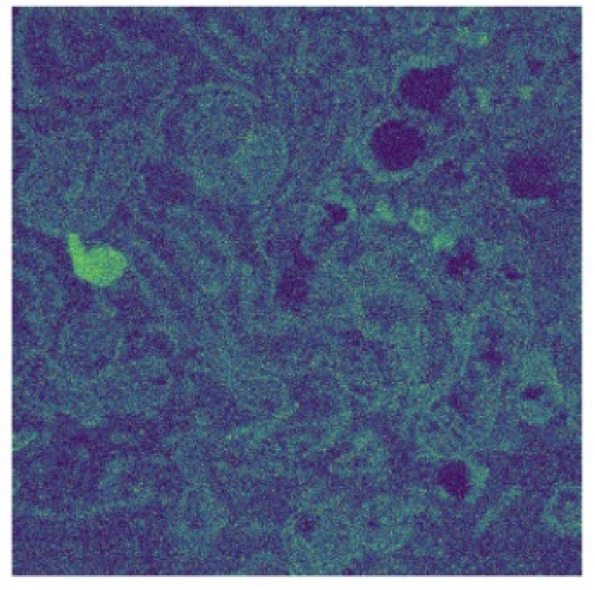
14 events per pixel
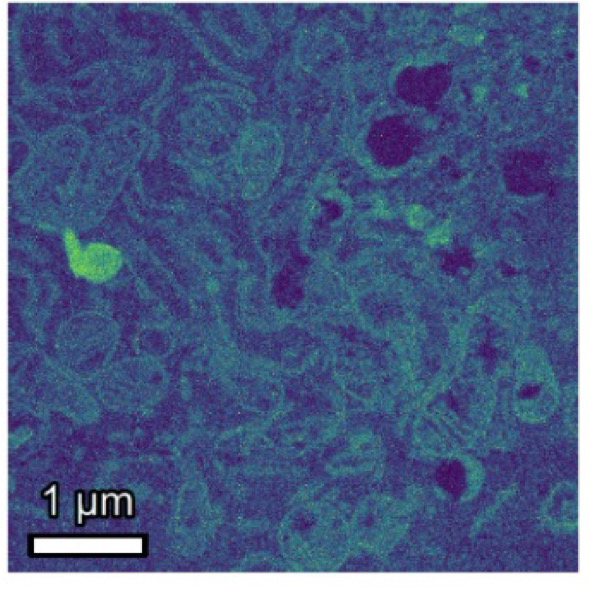
TEMPO images of human macrophage cells recorded with the beam blanker triggering after various event numbers. Contrast represents scattering-rate values. Data credit : turboTEM.
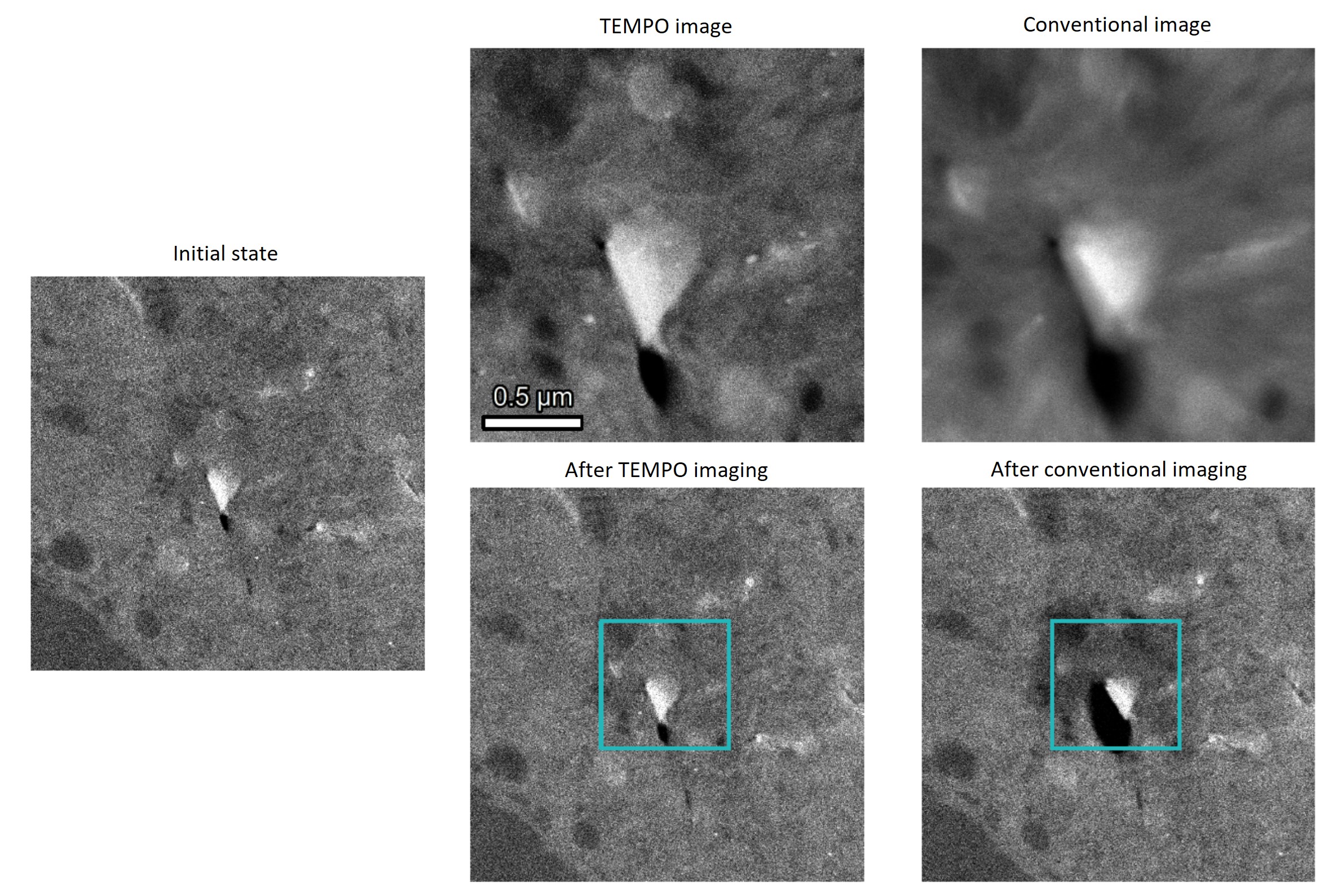
Example of reduced damage to a human macrophage sample when using TEMPO to image versus conventional STEM. After TEMPO imaging (using 3 electrons per pixel, 10 averaged frames) the initial state is preserved. During and after conventional imaging (10 averages frames) the sample displays significant damage and distortions. Data credit : turboTEM.
Related Information
Are you a medical professional or personnel engaged in medical care?
No
Please be reminded that these pages are not intended to provide the general public with information about the products.

